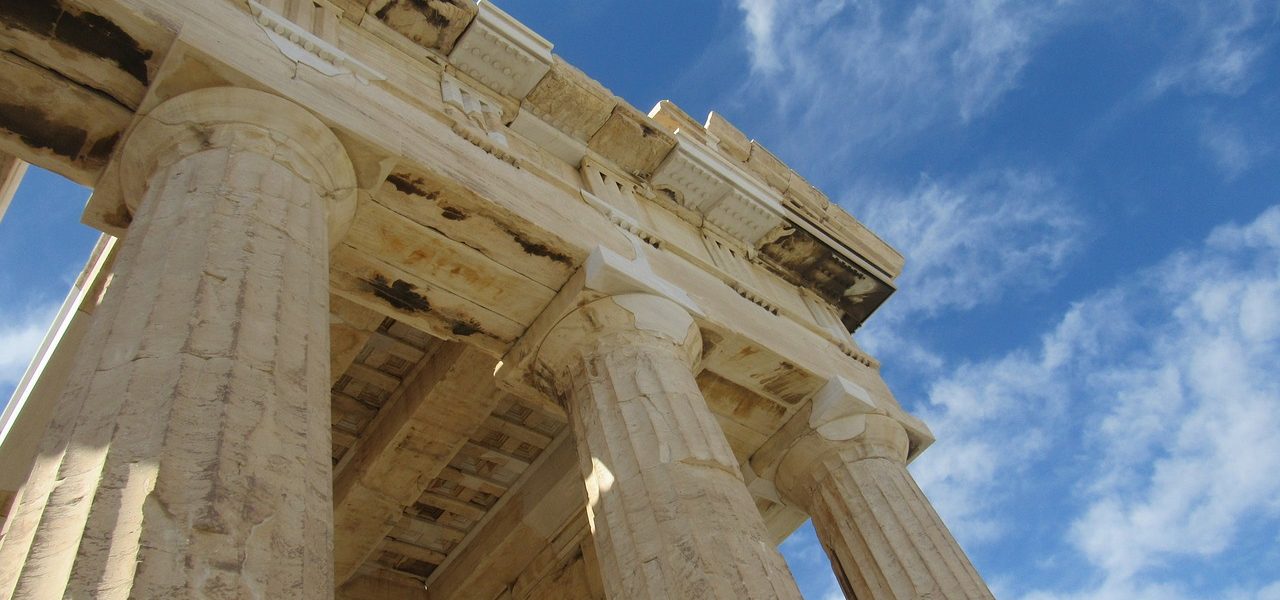Forum Replies Created
-
AuthorPosts
-
 PhidippidesKeymaster
PhidippidesKeymasterI came across the site for the Old Burial Hill in Marblehead, Massachusetts, and there were some interesting, good quality images of tombstones there, including ones with the skull + wings and then with the willow + urn. Among the sadder epitaphs was one for Mrs. Hannah Nowland (1793):
All you that doth my grave pass by,
As you are now so once was I,
As I am now so you must be,
Prepare for death & follow me. PhidippidesKeymaster
PhidippidesKeymasterActually, you’re right – stories of Stalinist USSR ought to be told, as well as stories of Lenin. I believe the largest murders in the 20th Century – probably of all time – were committed under Stalin’s reign, and yet there has never been a movie made (as far as I’m aware) that has told this story. I don’t think it’s only because of political reasons, though; I think that the veil of Communism in Russia until 1991 probably hindered research and knowledge of at least some of the ongoings during Stalin’s time. But now is as good a time as any for the public to know the truth about life in the Soviet Union. While I appreciate some of the fine films made about the holocaust in Germany or Poland during WWII, it’s not the only story of mass political murder from the 20th Century.
 PhidippidesKeymaster
PhidippidesKeymasterSpeaking of Iraq/Vietnam comparisons, check out Cal Thomas’ article from today (November 22, 2005), Sounding the Trumpet of Retreat. Nemesis, you may enjoy this article.
 PhidippidesKeymaster
PhidippidesKeymasterYes, Vietnam was to fight the spread of Communism in Southeast Asia (and beyond), but the Iraq War is meant to bring stability and democracy to that country (and the Middle East). Vietnam was fought on a jungle battlefield with lines drawn against a reinforced enemy (probably aided by the Chinese and Soviets); Iraq is fought in urban areas in a largely civilian setting against a small but dangerous enemy. I believe the mission in Vietnam was to protect the South Vietnamese border form northern invasion; the Iraq War’s mission is to stabalize the country enough so that the Iraqis can successfully govern and secure themselves. To be successful, the U.S. does not need to defeat the insurgents; rather, it only needs to enable the Iraqis to do this.
 PhidippidesKeymaster
PhidippidesKeymasterI found some information that you may have already seen (or not). The City of the Silent website has a glossary of tombstone symbolism, and it says that the winged skull was common to New England and represented “death and the soul taking flight”, which eventually morphed into the cherub with wings, which I’m guessing is the “winged face” you refer to (the second change). The same site says that the urn merely refers to death, or to the “soul having fled the shrouded body” (NB – the site has a place to ask questions, so they may be able to help you as well with this).
A second site, Cemetary Art and Symbolism, says that the Weeping Willow refers to "Perpetual Mourning". Again, you may have already known what these symbols mean, and are really looking to what caused the change in motifs.
All I can say is that the winged face era coincides with the beginning of the First Great Awakening; perhaps it was ushered in by New Lights who wanted a break from the ascetic and morbid tendencies of the Old Lights or established Puritanical influences in New England. I'm not sure where the winged skull originally came from...you may want to see if it was a style common to late Baroque/Rococco decorative art. The weeping willow might have references to Neoclassicist art which grew in popularity during the latter half of the 18th Century. You may want to ask your professor if any of these ideas are in the ballpark. PhidippidesKeymaster
PhidippidesKeymasterI agree, the comparisons between Iraq and Vietnam are made largely for political reasons. Since the public’s basic perception is that Vietnam was a losing and costly war, linking that image to Iraq shifts public opinion against the war. But these are two distinct missions with two very different enemies.
 PhidippidesKeymaster
PhidippidesKeymasterI didn’t catch that show, but I saw part of Meteors: Fire in the Sky on the History Channel, which was pretty interesting. I’m going to try to catch the repeat of Little Ice Age: Big Chill later tonight. It’s supposed to be about the effects that the colder climate from the Middle Ages to the 19th Century had on populations. Today is a good day on HC.
 PhidippidesKeymaster
PhidippidesKeymasterHi callutheranchick,
That's an interesting question. What kind of precise artististic changes were made to tombstones around 1790?
In Europe we can see the beginnings of the French Revolution, which included a rebellion against the Church in France. I'm not sure if this would have had an effect on Early American art, though. In America, the Second Great Awakening was a change in religion that began around this time.
Have you considered the possibility that the change in grave art may have been brought about by changes in politics? The US Constitution went into force in 1789, and the Bill of Rights followed soon after. Since feelings of patriotism and religion were much more closely linked during that era, ongoing sentiments at the birth of the nation could very well have translated into changes in religious artwork on graves.
But perhaps Donnie, our resident Colonial expert, can shed some light on religious happenings of the time...? PhidippidesKeymaster
PhidippidesKeymasterIf they allow it, let me know; I’ll be sure to send some visitors your way from my GA site so they can read some scholarly articles.
 PhidippidesKeymaster
PhidippidesKeymasterWow, thanks. I guess I should’ve known! 8)
 PhidippidesKeymaster
PhidippidesKeymasterI think that the three types of books I mentioned all have their place in the learning process in one way or another.
For me, expository textbooks give the best insight into general understanding of a time period or movement, as the authors have already studied the original sources and have some expertise in that area. Original fictional works from various eras of history are the most enjoyable, though, as they really grab one's attention and contain timeless, universal themes which relate to man's nature and to the world. They really lend to knowledge of the thought of a particular people from a particular time. PhidippidesKeymaster
PhidippidesKeymasterEnough people have read this book to make it a bestseller, probably many times over. It would be interesting to learn just how many people think that the book’s thesis has truth to it or not.
 PhidippidesKeymaster
PhidippidesKeymasterYes I actually think you’re right, it is sort of apples and oranges because of the nature of the 1920s economy (compared with 1990s economy). Today, we are far more diversified in industries, and there is also far more international participation in the U.S. markets – foreign direct investment and traders who participate in U.S. exchanges. The world is far more interconnected today than ever before. The economy of the 1920s was also affected by high tariffs, which are obstacles to free trade and hinder the efficient allocation of resources. We were more of an economic island back during the Great Depression, and it really took a foreign event (WWII) to bring us boldly out of the doldrums.
 PhidippidesKeymaster
PhidippidesKeymasterYes, that’s a better characterization of it – a domino effect of democracy. And while a common element is involved (fighting the enemy in one location on our terms rather than in another location), the domino theory presupposes governmental collapse through Communistic influence. Islamic terrorists won’t collapse any governments, but they could temporarily collapse part of an economic system.
Interesting part you said about USSR-Chinese competition. As of about 2000, the Chinese economy was still significantly in control by the government (at least 40%), which is like putting a straightjacket on a lion. Although the economy wants to move into the free market, the government is getting into the way. An attack by China on Taiwan or some other country would be a severe setback for its economy, as I believe massive foreign direct investment would come to a standstill.
You might want to add Venezuela as a Communist Creeper; last I heard the government was taking over oil production once again, which it had previously privatized a few dozen years ago when it realized the government wasn't good at running the petrol show. Talk about not learning from history. PhidippidesKeymasterDonaldBaker wrote:Many Americans did not understand what Hitler was all about nor did they know what he intended to do with the Jews…..of course (sadly) many Americans remained disaffected by Europe’s convulsions and disinterested in the plight of the Jewish people.
PhidippidesKeymasterDonaldBaker wrote:Many Americans did not understand what Hitler was all about nor did they know what he intended to do with the Jews…..of course (sadly) many Americans remained disaffected by Europe’s convulsions and disinterested in the plight of the Jewish people.
You could very well be right about this in general terms, but I don't think the holocaust was known about around the world until after the war was over and the atrocities were uncovered, such as during the Nuremburg trials. In fact, I would expect that prior to and during the war, it may have been known that the Jews were the political enemies of the Nazis, but the existence of death camps and genocide was news to the Allies (as in the movie Band of Brothers (based on a true story) which contains an episode where American troops come across a concentration camp).
I have visited the Dachau concentration camp, and one of the things I learned there that struck me was that the German residents of Dachau were not completely aware about what was going on in the camp. While they had somewhat of an idea (and can perhaps be blamed for wilful ignorance) I don't think that even they knew the full scope of activities there. -
AuthorPosts


